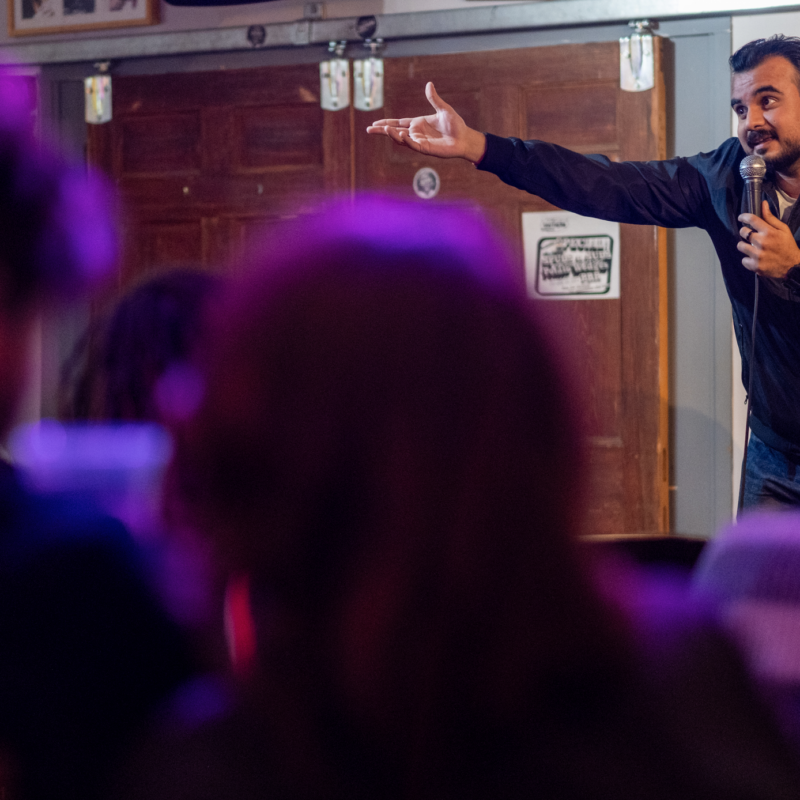How good a vintage will 2008 be? The grapes from that year have been harvested, processed, and now they’re in the cellar becoming wine. Wine time is slower than regular time. The current white wine releases are from 2007 and reds are from 2006. The ’08 wines may not see store shelves for a year or two, and in that time they will change drastically. Can we look into wine’s future?
It is cold in the barrel room of King Family Vineyards in Crozet and the air smells of yeast and spilled grape juice. Wine from the barrel is usually raw, out of balance—often overly tart or tannic. As you taste, you spit the wine into grates on the floor. You can expect to leave with your teeth and hands stained purple, and your pant legs and shoes spattered with red. But despite these grueling conditions, barrel tasting is a time-honored way for wine critics and winemakers to get some idea how the coming vintage will measure up.
|
King Family Vineyards’ Matthieu Finot, like every good winemaker, can taste most of the secrets in the raw wine in these barrels. |
Matthieu Finot and I start with two separate barrels of Chardonnay, the same except for different yeasts. One has a lovely citrus and flower nose. The second is noticeably less complex, with a flavor that is more homogenous and banana-like, a single taste as opposed to many. The Viognier (out of a stainless steel tank) is like straight grapefruit juice. “This wine,” Finot, the King Family winemaker, says of the Viognier, “keeps surprising me.”
We taste a Merlot rosé, pink like a watermelon and spritzy from some lingering CO2, and a Malbec that is tart—black fruit with strong tannins. The ’08 Merlot smells gorgeous, all raisins and gingerbread, and the Petit Verdot is still fermenting (it was the last grape picked, in early October). With that one we get a touch of unfermented sugar, but it’s got big tannins and is massive and mouth filling.
As a comparison, we taste the 2007 reds that have now been aging in barrel for a year. The Merlot has the same basic qualities as the 2008, but having gone through malolactic fermentation and with a year of age, the fruit, acid, and tannin have knit together into an almost seamless whole.
The ’07 Meritage, which smells lovely, like Christmas pudding, is the most complex of what we’ve tasted, which makes sense. One of the reasons a winemaker continually barrel tastes is to decide which wines should be bottled on their own, and which to use for blending. Wines like the Meritage, a combination of three different grapes, are the end result of all this tasting, the ultimate proof of winemaking as art.
Tasting three years of wine from the same vines, made by the same winemaker, is like watching a Polaroid slowly develop. Differences? Sure, but it’s fascinating how obvious their kinship is. A clear style runs through the wines, the same elements present year after year, like a liquid map of vinous DNA.
How good will 2008 be? “Very, very good,” Finot answers. Virginia has experienced a run of good vintages since 2004, and 2007 was talked about as the year. Brilliant. Perfect. This year might be just as good. But still, tasting the new wines, with acids, tannins, and fruit running wild in the glass, it’s hard to tell for sure what they will become. Finot says he’s never 100 percent certain what the end result will be. In barrel tasting and winemaking, he says, “there are no rules.”






